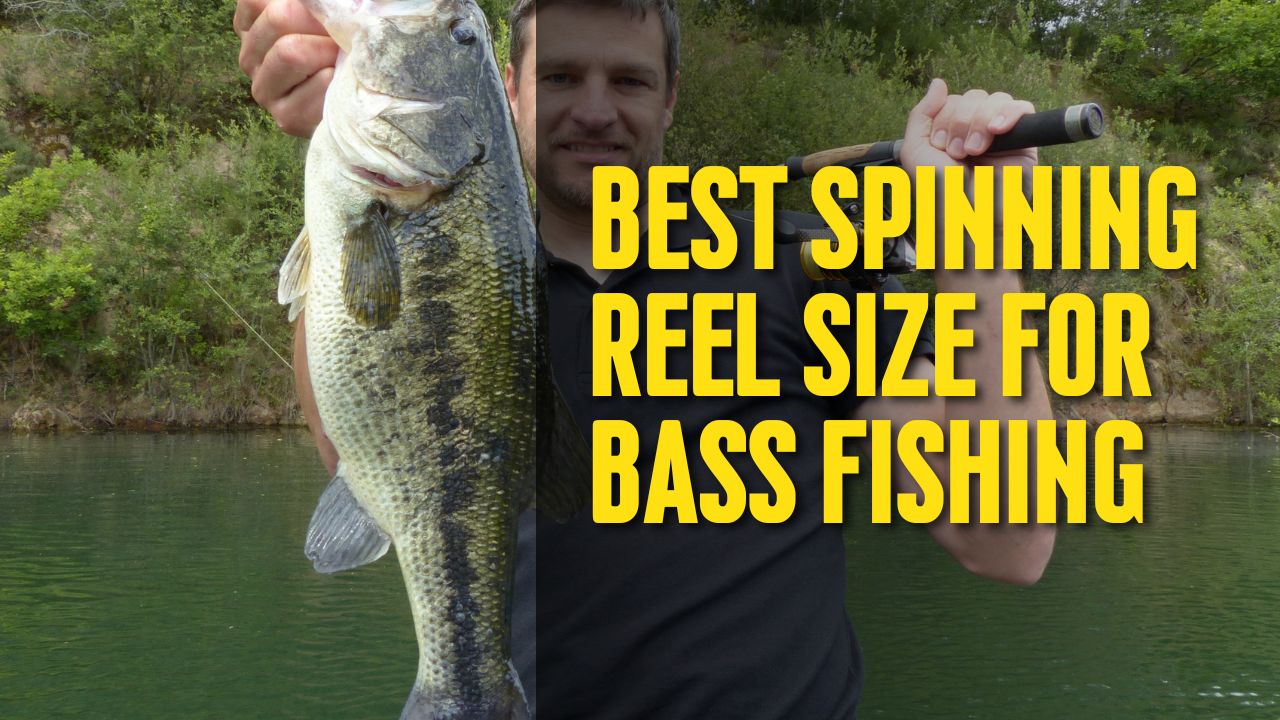Selecting the right spinning reel size is crucial for successful bass fishing. The perfect reel size can make a significant difference in your fishing experience and overall performance on the water. The best spinning reel size for bass fishing is generally in the range of 2500 to 3000. These sizes strike a perfect balance between line capacity, weight, and handling, making them versatile and suitable for a wide range of bass fishing techniques.
In this comprehensive guide, we will explore the factors that determine the best spinning reel size for bass fishing and provide valuable insights to help you make an informed decision. Whether you’re a beginner or an experienced angler, understanding reel sizes and their impact on bass fishing will enhance your chances of landing that trophy bass.

Understanding Spinning Reel Sizes
Spinning reels are available in various sizes, typically designated by numbers such as 1000, 2500, 3000, 4000, and so on. These numbers indicate the reel’s size class and play a critical role in determining its capabilities and suitability for specific fishing applications.
The numbering system may vary slightly between different manufacturers, but the general principles remain consistent. As the number increases, so does the reel’s physical size and line capacity. However, it’s essential to keep in mind that the specific dimensions of reels within the same size class may vary from brand to brand.
Factors to Consider for Bass Fishing
When selecting the best spinning reel size for bass fishing, several factors come into play. Consider the following key aspects to ensure you choose the right reel size for your preferred bass fishing techniques:
1. Line Capacity
Line capacity is a crucial consideration when bass fishing, as it determines the amount and thickness of the fishing line that the reel can hold. For bass fishing, you generally need a reel with sufficient line capacity to handle the preferred line weight and length without risking spool overflows or running out of line during a fight with a big bass.
2. Reel Weight
The weight of the spinning reel directly impacts your overall fishing experience. A lighter reel is generally more comfortable to handle for extended periods, reducing fatigue during long days on the water. However, it’s essential to find a balance between weight and other important features, as extremely lightweight reels may sacrifice durability and certain performance aspects.
3. Fishing Techniques
The spinning reel size you choose should align with the bass fishing techniques you intend to use. Different techniques may require various line types and weights, which in turn influence the appropriate reel size. For example, finesse techniques like drop-shotting or light Texas rigs may benefit from smaller reels, while heavy flipping and pitching may require larger reels with higher line capacities.
4. Rod Compatibility
Your spinning reel should be compatible with the rod you plan to use. Pairing a reel with an inappropriate rod can lead to imbalanced setups, affecting casting distance, accuracy, and overall performance. Be sure to match the reel’s size and weight with the rod’s specifications for optimal results.
5. Targeted Bass Size
Consider the average size of bass in your fishing area. If you’re targeting larger, trophy-sized bass, a reel with greater line capacity and power may be more suitable. On the other hand, if smaller bass are prevalent, a smaller reel may suffice.
6. Drag System
The reel’s drag system is essential for controlling the line tension during a bass fight. A larger reel typically offers a more robust and powerful drag system, which is advantageous when battling bigger, more powerful bass.
7. Balance and Comfort
Ultimately, the best spinning reel size for bass fishing is one that feels comfortable and well-balanced in your hands. A well-balanced setup enhances your casting accuracy and reduces strain during long fishing sessions, contributing to an enjoyable experience on the water.
Recommended Spinning Reel Sizes for Bass Fishing
Based on the factors discussed above, the following spinning reel sizes are commonly recommended for bass fishing:
1. 2500 Size Reels
The 2500 size reel is a popular choice for bass fishing enthusiasts. It strikes a good balance between line capacity and weight, making it versatile for a variety of bass fishing techniques. This size is suitable for finesse techniques, light to medium-weight lures, and general bass fishing in various conditions.
2. 3000 Size Reels
The 3000 size reel is slightly larger than the 2500 size and offers increased line capacity. It is well-suited for anglers who prefer heavier line weights and lures, as well as those targeting larger bass. The 3000 size is versatile enough to handle a wide range of bass fishing techniques with ease.
3. 2000 Size Reels
The 2000 size reel is another viable option for bass fishing, especially for anglers who prefer finesse techniques and lighter lures. It is ideal for targeting smaller bass and offers a more lightweight and compact setup.
Final Thoughts:
When it comes to selecting the best spinning reel size for bass fishing, several factors must be considered, including line capacity, weight, fishing techniques, rod compatibility, targeted bass size, drag system, and overall comfort. While the 2500 and 3000 size reels are commonly recommended for their versatility and performance, the right size for you ultimately depends on your individual preferences and fishing style.
